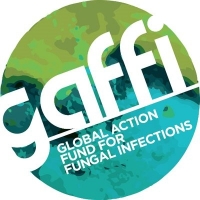GAFFI.org
Published on 09/23/2019
Essential in vitro diagnostics for advanced HIV and serious fungal diseases: international experts’ consensus recommendations

An accurate, timely diagnosis is the cornerstone of good medical practice. For opportunistic fungal infections in AIDS and other invasive mycoses, this is dependent on the availability of and accessibility to the relevant diagnostic tests. A call for a model List of Essential In Vitro Diagnostics (EDL)—“listed tests that should be reasonably available for people who need them, whether in the form of point-of-care tests in physicians’ offices and pharmacies or as high-complexity tests in reference laboratories”—has been published [1]. In addition to better medical practice, other potential benefits of an EDL include clarification of priorities for policy makers, setting common goals for laboratory testing, improved healthcare delivery and overall better patient outcomes [1]. In the context of extensive antimicrobial resistance (AMR), a reduction in empiricism with more accurate diagnosis will play a key role in AMR control [2].
Globally, 37 million people are living with HIV [3], over a third of whom present or return to care after treatment interruption with advanced HIV disease defined as a CD4 cell count < 200 cells/mm3 or a World Health Organization (WHO) clinical stage 3 or 4 event [4, 5]. The commonest causes of death in advanced AIDS are tuberculosis (TB), cryptococcosis, Pneumocystis pneumonia, bacterial pneumonia or sepsis, disseminated histoplasmosis (some regions), and cerebral toxoplasmosis [5]. There is a very close link between advanced HIV disease and serious fungal infections and TB [5, 6], and the greatest burden of these diseases is seen in low- and middle-income countries (LMICs). Annually, about 1 million people die of AIDS-related illnesses [3] and beyond HIV in total over 1.5 million people die from serious fungal infections [7]. This is comparable with the 1.7 million TB-related deaths in total [8]. Simple, fast, accurate and stable diagnostic tests are essential to improvement in targeted treatment and hence reducing deaths and suffering related to these diseases [9, 10]. Modelling by the Global Action Fund for Fungal Infections (GAFFI) suggests that making the key diagnostic tests for serious fungal diseases available for only 60% of patients in need, with treatments, could save over a million lives in the next 5 years [6], on top of the likely survival benefits of the ambitious 90-90-90 target, The 90-90-90 target is that by 2020, 90% of all people living with HIV will know their HIV status, 90% of all people with diagnosed HIV infection will receive sustained antiretroviral therapy (ART), and 90% of all people receiving ART will have viral suppression.
Led by GAFFI, which is focussed on ensuring universal access to diagnostics for serious fungal infections by 2025 [11], a workshop on essential diagnostics for serious fungal diseases, TB and other opportunistic infections in advanced HIV disease was convened in Kampala, Uganda, between 10th and 12th April 2018. The meeting was timed to precede and help inform the WHO’s Strategic Advisory Group of Experts on In Vitro Diagnostics (SAGE-IVD) meeting from which the new WHO EDL emanated [12]. The overall aim of the workshop was to gather experts and review evidence on available diagnostics for HIV/AIDS-associated opportunistic infections and serious fungal diseases for inclusion in the WHO EDL, the first version of which has now been published [12]. The specific objectives of the meeting were, firstly, to review the evidence base for key tests to produce a consensus for recommendation at different strata of health care facility level (Tier) for inclusion in the WHO EDL. Secondly, the meeting aimed to provide the specific arguments and diagnostic performance criteria for the EDL applications to the WHO and thirdly to publish a summary report on the forum, highlighting strengths, weaknesses (gaps), opportunities and challenges with the commercially available diagnostic test portfolios.
Ninety-five participants including experienced clinicians, senior laboratory staff and public health practitioners contributed to the meeting. Participants were drawn from 27 countries, mainly LMICs, including Brazil, Cameroon, Egypt, Ethiopia, France, French Guiana, India, Ireland, Japan, Kenya, Malawi, Mozambique, Nigeria, Pakistan, Portugal, Senegal, Slovenia, South Africa, South Sudan, Spain, Swaziland, Tanzania, Uganda, Ukraine, the UK, the USA and Zambia. Contributors included representatives from WHO, UNITAID, Medecins Sans Frontieres, African Society for Laboratory Medicine, Clinton Health Access Initiative, Medical Access, WHO Collaborating Centers for Reference and Research on Fungi of Medical Importance/Antimicrobial Resistance (India/South Africa/USA), ministries of health, national reference laboratories, US Centers for Disease Control and Prevention, research institutes and both diagnostic and pharmaceutical companies with an interest in HIV/AIDS and/or fungal diseases.
The meeting included workshops on pre-selected key non-culture diagnostics, e.g. TB urinary antigen (LAM), cryptococcal antigen (CrAg), Histoplasma antigen, Aspergillus IgG, Pneumocystis PCR and Toxoplasma IgG/IgM and one on antifungal therapeutic monitoring. Shorter summaries of the clinical value of another 6 diagnostics, mainly, culture-based methods and other biomarker assays were also presented in the context of LMICs. The main question for each diagnostic method was—“is it essential?”. Each presentation by an expert in the topic area reviewed the available evidence on diagnostic performance of each test, their ease of use and cost-effectiveness. The strength of recommendation was derived from the diagnostic performance, clinical value and suitability of the selected tests for LMICS. Panel discussions then lead to a consensus recommendation for each diagnostic test . For more broadly based tests such as direct microscopy, blood culture, and fungal culture, the meeting concluded that such tests were essential, although these were not reviewed in a systematic manner.
Published in the following categories: AMR CDC Clinical Dermatophytes Medical Mycology NGO / Humanitarian WHO